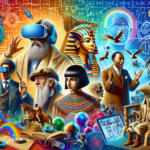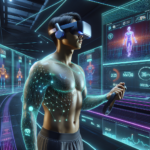What If Meta & Microsoft Created Cross-Platform XR Collaboration?
In today’s fast-changing world of remote work, the demand for cross-platform XR collaboration tools is growing stronger. Imagine a scenario where tech leaders Meta and Microsoft unite to design an innovative cross-platform XR collaboration tool specifically made for remote teams. Let’s explore the possibilities of such a groundbreaking tool and how it could transform teamwork across distances.
The Importance of Cross-Platform XR
When it comes to collaboration tools, cross-platform XR compatibility is vital. Meta’s introduction of the Ocean framework, which is an open-source solution for creating mixed and augmented reality applications, sets a solid foundation for this vision. The Ocean framework promises support across multiple operating systems and devices, including iOS, Android, Quest, macOS, Windows, and Linux. This ensures that teams can effortlessly collaborate, no matter their hardware.
In addition, Microsoft’s advancements in Augmented Reality (AR) and Virtual Reality (VR) through tools like AR Foundation and the XR Interaction Toolkit make this collaboration even more promising. They offer a unified API that seamlessly integrates with a variety of platforms, including Meta Quest, HoloLens 2, and mobile devices, enabling users to collaborate without limitations.
Integrating Meta and Microsoft Solutions
The combination of Meta and Microsoft technologies could harness the best resources from both companies. Here’s how:
Integrating Meta Quest with Microsoft Teams
By integrating Meta Quest devices with Microsoft Teams, which boasts 270 million monthly active users, remote teams could gather in immersive virtual environments. Microsoft’s Mesh for Teams enhances this experience, allowing users to connect and collaborate as if they were physically together, but with the added realism provided by Meta Quest devices.
Combining XR Interaction Toolkit and Ocean Framework
Another opportunity lies in merging the XR Interaction Toolkit (XRI) from Unity with Meta’s Ocean framework. This collaboration would provide developers with a powerful toolkit for creating advanced XR interactions, such as gesture tracking, microphone input, and external camera compatibility across several devices.
Enhancing AR Foundation with OpenXR
AR Foundation, a framework designed for mobile and headworn AR/MR device applications, could benefit further from integration with Meta’s Ocean framework. Implementing OpenXR standards guarantees that the resulting tool remains compatible with a variety of XR hardware, including options from vendors like Acer, HTC, and Sony.
Boosting Remote Collaboration
A cross-platform XR collaboration tool designed by Meta and Microsoft would offer several innovative features aimed at improving remote teamwork:
Immersive Meetings
Through the fusion of Mesh for Microsoft Teams and Meta Quest, teams can engage in virtual meetings that emulate in-person experiences. Features such as virtual avatars, spatial audio, and interactive environments would make meetings much more engaging and dynamic.
Creating Interactive Workspaces
Tools like Autodesk Workshop XR and Arthur, which enable collaborative work in immersive 3D environments, could find a place in this new platform. This would allow teams to collaboratively edit 3D models and identify errors in a visually rich, interactive setting.
Enabling Real-Time Collaboration
The proposed tool could also introduce real-time collaboration capabilities. Features might include the ability to share views, place spatial annotations, and have interactive discussions. This would prove invaluable in sectors like education, where instructors could simultaneously manage multiple Quest devices for teaching.
Ensuring Security and Compliance
Amid growing concerns over security in remote work, the new collaboration tool must uphold strict security standards. Microsoft’s established security features, including end-to-end encryption, data loss prevention, and compliance certifications, would play a critical role in keeping the collaboration secure.
Looking Ahead: Future Implications of Cross-Platform XR Collaboration
Creating a cross-platform XR collaboration tool carries significant implications for the evolution of work:
Fostering Workplace Flexibility
As remote work continues to evolve, tools that facilitate seamless collaboration across varied devices and locations will be increasingly vital. With a Meta-Microsoft XR collaboration tool, teams would gain the freedom to work from virtually anywhere, maintaining an immersive experience.
Driving Industry Adoption
The integration of XR technologies into diverse industries would see remarkable advancement. For instance, educational institutions could leverage this tool to craft immersive learning experiences, while real estate agents could offer virtual property tours that feel remarkably authentic.
Encouraging Innovation and Development
By adopting an open approach, as Meta has done compared to Apple’s more restrictive ecosystem, a community of developers could thrive. This environment would enable the creation of customized solutions using the Ocean framework and other open-source tools, fueling innovation and adaptability to the needs of remote teams.
The commitment of Meta and Microsoft to enhance cross-platform XR collaboration will undoubtedly shape the future dynamics of teamwork.




0 Comments